Occupational safety training for operating suspended gondola platforms
99,000 ₫
Note: The above price is calculated per person and may fluctuate depending on the number of participants in the course and market conditions. For more accurate pricing, please refer to the price list or contact our consulting staff directly.
Occupational safety is a critical issue when operating suspended gondola platforms and must be addressed promptly to ensure the health and safety of workers while enhancing the reputation of businesses. The Occupational Safety Training course is one of the effective solutions to raise awareness on how to prevent workplace accidents for workers operating suspended gondola platforms.
Table of Contents
Toggle1. Overview of Gondola Suspended Platform
a. What is a Gondola Suspended Platform?
A gondola suspended platform is a device used in construction and maintenance to transport personnel and materials up and down high-rise structures such as buildings, bridges, towers, and other tall structures. This equipment is commonly used for painting, repairing, cleaning, or performing other tasks in locations that are difficult or impossible to access from the ground.
A gondola suspended platform typically consists of a secure suspension system attached to the exterior of the structure and a platform or base attached to the suspension system. Workers and necessary materials are placed on this platform, which is then controlled to raise or lower them to the required position. This provides a safe and efficient means to perform work at heights without using traditional methods such as elevators or scaffolds.
Gondola suspended platforms are widely used in the construction and maintenance sectors and are an essential part of building and maintaining high-rise structures.

b. Applications of Gondola Suspended Platform in Production
Gondola suspended platforms are not always used in production, but there are some cases where they have applications:
- Painting and product finishing: In many production processes, painting and surface finishing are essential steps. Gondola platforms can be used to raise and lower products or components for even and precise painting and finishing.
- Equipment inspection and maintenance: Gondola platforms provide a convenient way to inspect and maintain high-level industrial equipment, such as manufacturing machinery, mechanical systems, or even electronic devices. Technicians and engineers can access equipment parts easily for inspection, repair, or maintenance.
- Transporting and arranging products: Gondola platforms can also be used to move products from one production area to another. They save time and effort when handling large or bulky items.
- Product assembly and repair: In processes requiring complex product assembly and repair, gondola platforms help workers access hard-to-reach areas efficiently.
- Maintenance of production facilities: Gondola platforms can be used for maintenance tasks including painting, repairing, replacing, and cleaning facilities, ensuring they remain safe and operational.

c. Industries Using Gondola Suspended Platform
Gondola suspended platforms are used across various production industries, especially those requiring work at heights or in hard-to-reach areas. Key industries include:
- Automotive manufacturing: Used for assembly of vehicle parts, quality checks, and finishing exterior and interior surfaces.
- Aerospace manufacturing: Essential for assembling and inspecting aircraft and spacecraft components at height.
- Shipbuilding: Used to assemble, inspect, clean, and maintain ship components.
- Steel structure manufacturing: Supports assembly and maintenance of steel structures for buildings and bridges.
- Paper and printing industry: Used to inspect and maintain machinery, as well as for printing and packaging tasks at height.
- Power generation industry: Helps in maintenance and repair of tall power plant structures, oil and gas pipelines, and towers.
- Metal product manufacturing: Supports handling and working on large metal components.
Note that applications may vary depending on the specific industry and project.
2. Overview of Safety Training for Operating Gondola Suspended Platform
a. What is Occupational Safety Training?
- Occupational safety training for operating a gondola suspended platform consists of courses that provide workers with knowledge and awareness to prevent workplace accidents. Workers who directly operate gondola platforms belong to Group 3.
- Safety training helps workers recognize hazards, avoid risks, and reduce the likelihood of accidents during work.
REGISTER FOR OCCUPATIONAL SAFETY TRAINING
b. Training Duration
Initial safety training duration:
- Total training time is at least 24 hours, including testing.
- 8 hours of theory on policies, regulations, and occupational safety
- 8 hours of basic occupational safety knowledge
- 4 hours of specialized training theory
- 2 hours of specialized practical training
- 2 hours of theoretical testing at the end of the course
Training centers will schedule multiple sessions depending on worker availability. Typically, there are 6 sessions over 3 days if the company arranges continuous training.
Periodic safety training duration:
- Before the occupational safety card expires, workers must attend periodic safety training. The duration must be at least 50% of the initial safety training duration.
Explanation: Periodic safety training lasts at least 12 hours including testing. Upon completion and passing the test, the occupational safety card is reissued.
c. Training Content
| No. | TRAINING CONTENT | TRAINING TIME (HOURS) | |||
| Total | Including | ||||
| Theory | Practice | Test | |||
| I | Occupational safety policies and regulations | 8 | 8 | 0 | 0 |
| 1 | Overview of occupational safety laws and regulations. | 6 | 6 | ||
| 2 | Standards and technical regulations on occupational safety. | 1 | 1 | ||
| 3 | Specific regulations of government agencies regarding occupational safety when constructing, expanding, or upgrading facilities and inspecting machinery, equipment, and hazardous materials. | 1 | 1 | ||
| II | Basic occupational safety knowledge | 8 | 8 | 0 | 0 |
| 1 | Basic knowledge of workplace hazards. | 4 | 4 | ||
| 2 | Methods to improve working conditions. | 1 | 1 | ||
| 3 | Safety culture in production and business. | 1 | 1 | ||
| 4 | Rights and obligations of employers and employees; safety policies and procedures; functions and duties of safety networks and safety officers. | 1 | 1 | ||
| 5 | Occupational safety rules, signage, using safety equipment and personal protective equipment; basic first aid and prevention of occupational diseases. | 1 | 1 | ||
| III | Specialized training content | 6 | 4 | 2 | 0 |
| Comprehensive knowledge of machinery, equipment, hazardous substances; risk assessment, management, and safe procedures for machinery and materials requiring strict safety regulations. | 6 | 4 | 2 | ||
| IV | Final safety training test | 2 | 2 | 0 | 0 |
| Total | 24 | 22 | 2 | ||
See more training content of the 6 groups
d. Occupational Safety Card
Upon completing the safety training and passing the test, workers will receive a Occupational Safety Card (commonly called Group 3 Safety Certificate).
The Group 3 card displays information such as full name, date of birth, job, work environment, training duration, official stamp, and signature confirming completion.
According to regulations in Clause 2 of Article 24, Decree 44/2016/ND-CP, there are two cases:
- If the employer and employee have a labor contract, the employer must sign and stamp the safety card after the employee completes Group 3 training and passes the test.
- If the worker is freelance or temporary without a labor contract, the training unit must sign and stamp the card after completing the training and passing the test.

Group 3 Occupational Safety Card for Gondola Suspended Platform Operation
3. Hazards When Operating a Gondola Suspended Platform
Operating a gondola suspended platform can involve many hazards, especially if safety regulations and work procedures are not followed. Below are some common hazards encountered during gondola platform operations:
- Falls from height: This is the most significant hazard when working on a gondola suspended platform. Failure to follow safety rules or malfunctioning equipment can result in falls, causing injury or death.
- Technical failures: Gondola platform machinery and equipment must operate reliably and stably. Technical issues such as mechanical breakdowns, electrical faults, or control failures can lead to serious accidents.
- Weather hazards: Outdoor conditions, such as strong winds, storms, snow, or fog, can affect gondola platforms and increase the risk of accidents.
- Failure to follow safety rules: Using a gondola platform requires adherence to all safety regulations and work procedures. Not wearing personal protective equipment, improper work practices, or ignoring safety rules can result in accidents.
- Collisions and impacts: During operation, gondola platforms may collide with surrounding structures or other objects, risking damage to the equipment or platform itself.
- Loss of control: If the operator does not properly control the gondola platform or loses control due to unexpected situations, accidents can occur.
To minimize hazards when operating a gondola suspended platform, all safety regulations must be followed, equipment should be maintained and inspected regularly, workers should be trained in safe operation, and weather conditions should be monitored to ensure safe use.

4. Measures to Control Occupational Accidents When Operating Gondola Suspended Platforms
To control and minimize occupational accident risks when operating gondola platforms, several important safety measures should be implemented. Below are key measures to protect workers:
- Training and instruction: Ensure all workers on the gondola platform are trained on safe equipment use and work rules. This includes inspecting and controlling the platform, wearing protective gear, and responding to emergencies.
- Personal Protective Equipment (PPE): Require all workers on the gondola platform to wear appropriate PPE, including helmets, thermal clothing, safety shoes, and harnesses. PPE protects workers from injury risks.
- Periodic equipment inspection: Conduct regular inspections and maintenance of the gondola platform. This ensures equipment functions correctly and reduces technical failure risks.
- Situation assessment: Before starting work, assess conditions by checking weather, the work environment, and potential hazards. If conditions are unsafe, pause work until it is safe.
- Use of safety devices: Always use safety devices such as harnesses, fall arrest systems, and control systems to limit gondola movement.
- Monitoring and supervision: Implement continuous monitoring of gondola platform operations. Stop work immediately and take corrective action if issues arise.
- Work organization: Organize tasks so workers feel safe and comfortable on the platform. This includes planning work schedules and managing fatigue and stress.
- Communication system: Provide effective communication between workers on the platform and supervisors or rescue teams via mobile phones or wireless systems.
- Periodic supervision and assessment: Regularly review work processes, safety systems, and rule compliance to ensure safe operations.
- Emergency response plan: Ensure a clear emergency plan exists for dangerous situations, and all workers know how to act safely during incidents.
- Periodic inspection of gondola platforms to detect early safety issues such as wear or mechanical failure, reducing the risk of occupational accidents.
5. Benefits of Occupational Safety Training
An Toan Nam Viet provides businesses with the following benefits after completing occupational safety training according to Decree 44/2016/ND-CP on occupational health and safety:
- Workers can identify potential accident risks and take preventive measures to avoid occupational accidents.
- Businesses can establish risk prevention measures in production, operation, and maintenance processes.
- Minimizes costs related to safety incidents.
- Uninterrupted production increases labor productivity and product quality.
- Compliance with occupational safety laws reduces legal risks.
- Enhances professionalism and reputation, elevating the business brand.
Nam Viet training courses provide practical solutions to prevent external hazards that may cause injuries or fatalities.
REGISTER FOR OCCUPATIONAL SAFETY TRAINING
6. Customer Feedback After Completing Training
An Toan Nam Viet has years of experience supporting businesses across Vietnam, particularly in the southern provinces. This responsibility is highly valuable, and our occupational safety training is increasingly professional. Positive feedback and constructive suggestions from clients drive our growth. Below are some client testimonials.
7. An Toan Nam Viet Occupational Safety Training Capability
An Toan Nam Viet is a reputable occupational safety training center in Vietnam, conducting ongoing training at factories, workshops, and construction sites across 63 provinces.
REGISTER FOR OCCUPATIONAL SAFETY TRAINING
Occupational safety training license
- An Toan Nam Viet has been inspected and certified by the Department of Safety under the Ministry of Labor – Invalids and Social Affairs, confirming our capacity for occupational safety training.

Training materials and lectures
- Before being used in training courses, materials are reviewed to ensure accuracy and effectiveness.
- Teaching methods follow An Toan Nam Viet standards, based on expert research and practical experience to maximize learner comprehension.
Facilities
- Control of classroom factors improves teaching efficiency and knowledge retention.
- Our training facilities offer spacious classrooms with adequate lighting, equipment, and materials.
8. Nationwide Reputable Occupational Safety Training Center
At An Toan Nam Viet, professional occupational safety training is a top priority. We carefully prepare every detail, from equipment to training materials, audio, and lighting.
Our instructors are experts with years of experience and research in hazard identification and prevention. Lessons are practical, engaging, and aligned with Decree 44/2016/ND-CP, helping workers learn safety measures and self-protection techniques.
Our training center is recognized for:
- Competitive training costs with quality assurance.
- Flexible schedules matching production needs.
- Fast, legally compliant certification procedures.
- Experienced instructors.
- Well-controlled classroom environments for effective learning.
- Lectures tailored to workplace safety requirements.
- Dedicated, professional support for clients.

9. Additional Occupational Safety Training Materials
- Occupational safety materials for gondola platform operation
- Occupational safety training material set
- Occupational safety training test set
- Occupational safety multiple-choice test for gondola operation
- Gondola platform occupational safety training slides
1 review for Occupational safety training for operating suspended gondola platforms
No comments yet

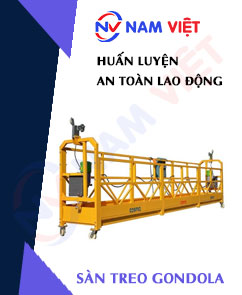
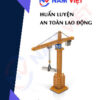
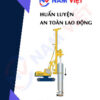





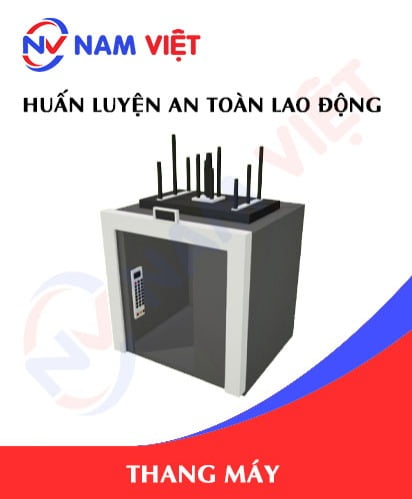
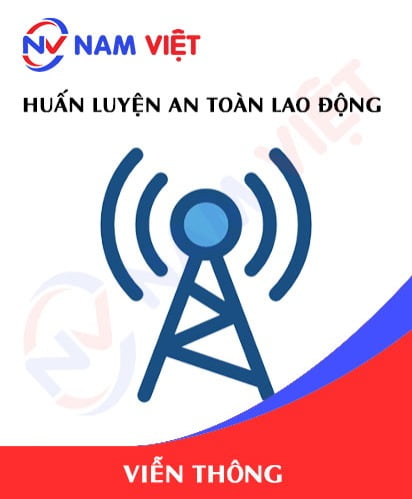

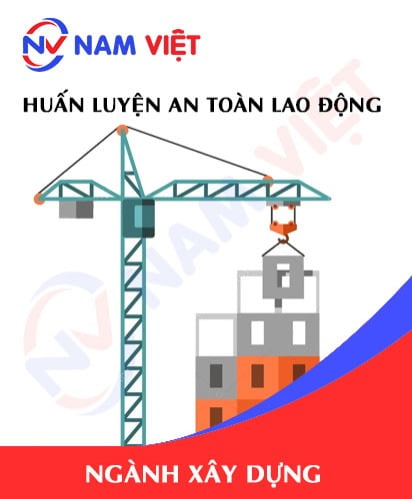

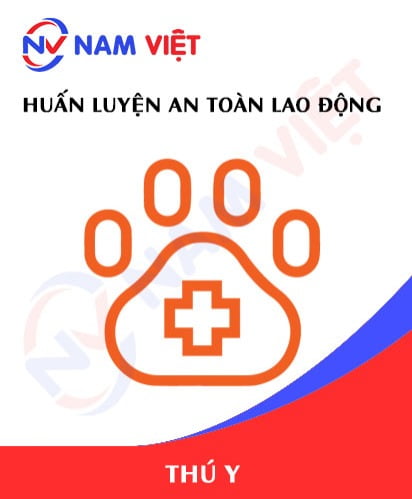
phanminhhang341
Good labor safety unit